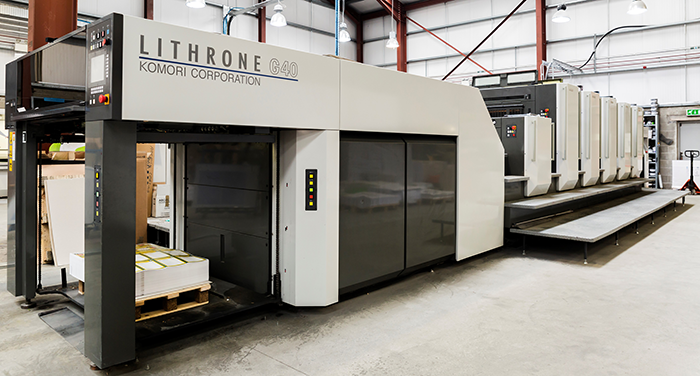A Comprehensive Guide to Understanding Litho Printing Strategies
The globe of litho printing, a strategy originating from the late 18th century, is a remarkable mix of history, technology, art and scientific research. This thorough overview will certainly unravel the complexities of this printing technique, from the structure of litho inks to the obstacles encountered in modern-day applications. As we venture right into the intricacies of lithography, the value of automation and sustainability in ensuring its future relevance ends up being significantly clear. Remain with us as we trip into the fascinating realm of litho printing.
The Historic Advancement of Litho Printing
The historical trajectory of litho printing, an essential technology in the realm of communication, is a captivating tale of human resourcefulness. Birthed in the late 18th century by Alois Senefelder, this method was originally an economical technique of publishing staged works. Lithography, stemmed from the Greek words for 'rock' and 'to create', used a smooth stone surface area to transfer images onto paper. The process advanced with the development of the rotating press, which considerably enhanced productivity (litho printing). In the 20th century, the innovation of balanced out lithography reinvented the market, permitting automation of premium prints. Each phase of litho printing's advancement showcases humankind's relentless search of performance and top quality in visual communication.
Deciphering the Scientific Research Behind Litho Printing Inks
Progressing in the exploration of litho printing techniques, the emphasis currently moves to the science behind litho printing inks. The make-up of these inks, their drying out process, and shade mixing strategies develop the backbone of this complicated art form. Recognizing these aspects is essential to mastering the craft and achieving the desired print outcomes.
Make-up of Litho Inks
In lithographic printing, the fundamental role of litho inks can not be overemphasized. Pigments, the color-providing components, are carefully ground bits put on hold in the vehicle, a fluid that brings the pigment onto the printing surface area. Each part plays a crucial part in the last print's top quality, making the specific formula of litho inks a detailed scientific research.
Ink Drying Refine
From the composition of litho inks, attention transforms to the remarkable procedure of ink drying. The drying process is essential, as it impacts the final print's high quality and durability. 2 primary methods are used in litho printing: oxidative drying and absorption. Oxidative drying involves the ink responding with oxygen in the air to form a difficult, dry film. This technique offers a durable finish, but can be slower contrasted to absorption. Absorption, on the various other hand, entails the ink permeating right into the paper fibers, which is a much faster procedure but can bring about much less vibrant shades. The selection between these approaches depends on elements such as print speed requirements, the paper type utilized, and the wanted finish.
Color Combining Strategies
While the drying out procedure plays a vital duty in litho printing, the science of shade blending strategies holds equal significance. This is a complex process that includes the mindful blending of key colors: cyan, magenta, and yellow, in varying proportions to attain a wide array of colors. The enhancement of black ink, called 'vital', helps in controling the strength and depth of the colors. The science behind litho printing inks additionally takes into consideration the transparency of the ink, which affects exactly how shades overlay and mix. To attain an efficient color mix, print specialists should likewise comprehend the ins and outs of ink habits, shade concept, and the physical buildings of the substrate on which the ink is used.
The Art and Layout Elements in Litho Printing
Litho printing takes a breath life right into art and layout via its distinct aspects. Litho printing accommodates a range of shades, making it possible for artists to develop vibrant and lively prints. This combination of accuracy and adaptability makes litho printing a recommended option for several artists and webpage developers.
Modern Applications of Litho Printing Techniques
Litho printing strategies have located comprehensive use in the modern commercial field. Its influence and significance remain to expand with the advent of brand-new developments and innovations in the field. This section will explore these modern applications and the transformative function they play in the printing market.
Industrial Litho Printing Uses
In today's electronic age, one might wonder about the importance of conventional printing techniques. Litho printing continues to be a critical part of the business field. High-volume printing jobs, such as the manufacturing of publications, newspapers, and product packaging, depend on litho printing for its ability to supply premium image high quality and price performance. The process, which includes transferring a tattooed image from a plate onto a rubber blanket and then to the printing surface, provides unmatched consistency. This makes it ideal for work needing a huge print run. Litho printing additionally offers a broad color spectrum, exceptional to that of electronic printing. This makes it the go-to option for tasks that demand dynamic, top notch shade reproduction.
Advancements in Litho Printing
Pushing the boundaries of typical strategies, modern advancements have fueled a host of technologies in litho printing. These innovations have not just improved the high quality and effectiveness of litho prints however likewise broadened its application scope. One famous development is digital litho printing, which integrates the merits of digital modern technology with litho's high-quality outcome. This crossbreed model provides faster setup times, lowered waste, and makes it possible for on-demand printing. Another remarkable innovation is the introduction of eco-friendly inks. These inks, made from veggie or soy-based services, have dramatically decreased the sector's ecological impact. litho printing. Additionally, the advancement of innovative plate technology has structured the printing process, causing sharper pictures and enhanced shade fidelity. learn this here now These technologies emphasize the long-lasting significance of litho printing in the modern globe.
Exploring the Process of Litho Printing: Step by Step

Challenges and Solutions in Contemporary Litho Printing

Despite the accuracy and custom that litho printing happily supports, it is not without its set of contemporary difficulties. Digital litho printing allows for economical brief runs and very easy personalization, resolving the problem of variable data. Therefore, while there are difficulties, the litho printing market is proactively adjusting to meet them head-on, guaranteeing its relevance in the future.
Final thought
In conclusion, litho printing, with its rich background and clinical complexities, holds a considerable location in the print industry. The future of litho printing hinges on its capacity to adjust to these changing demands, verifying its long-lasting worth in an evolving market.
